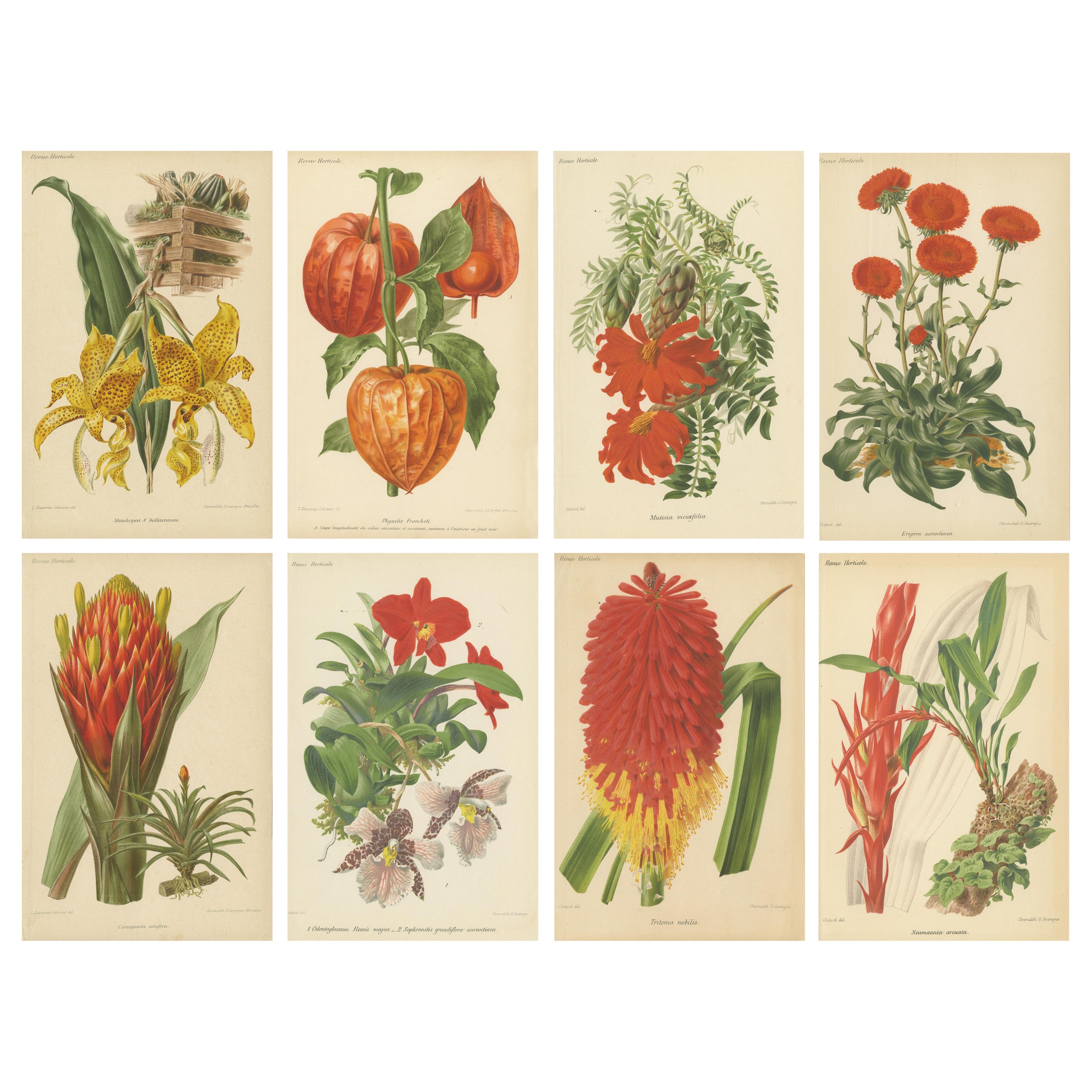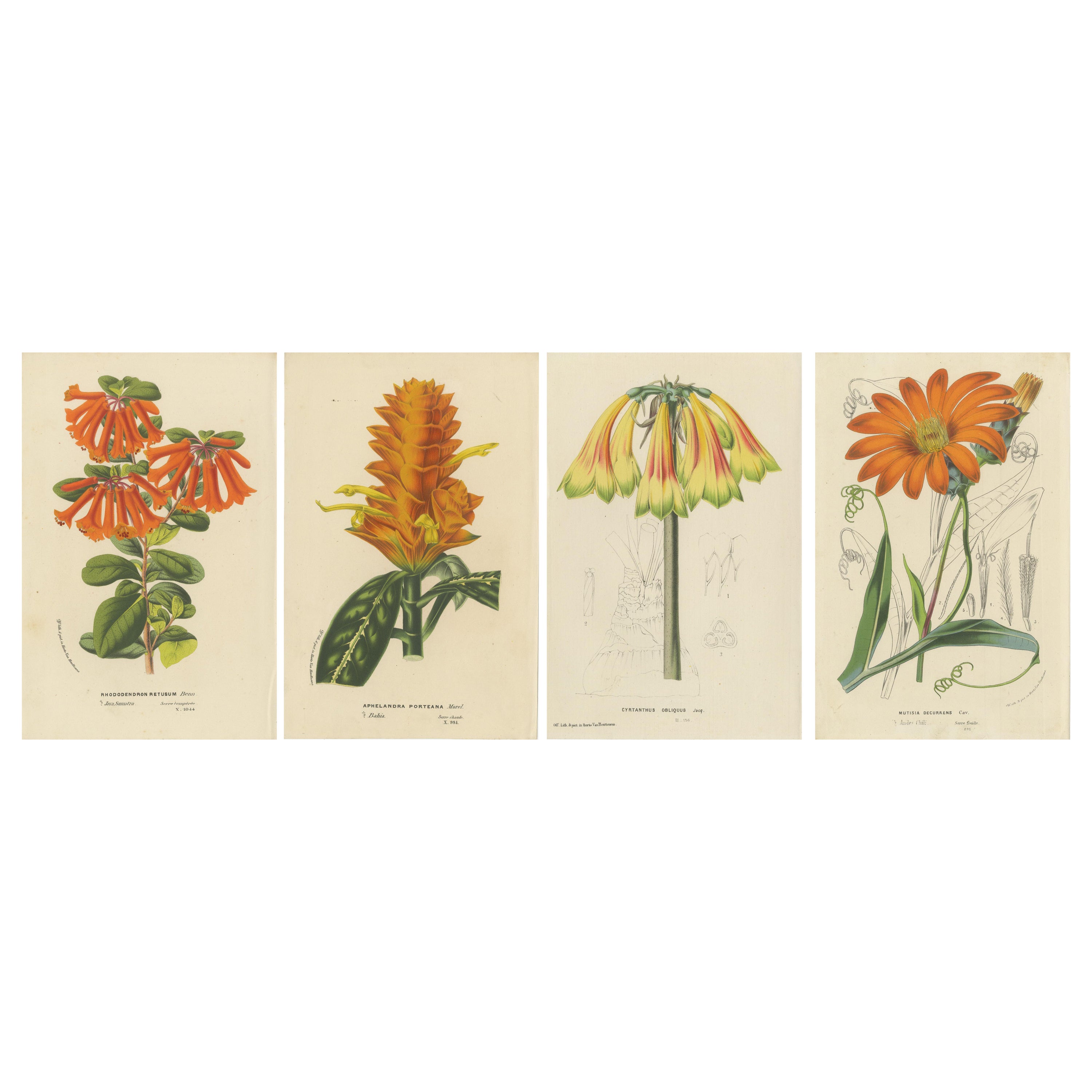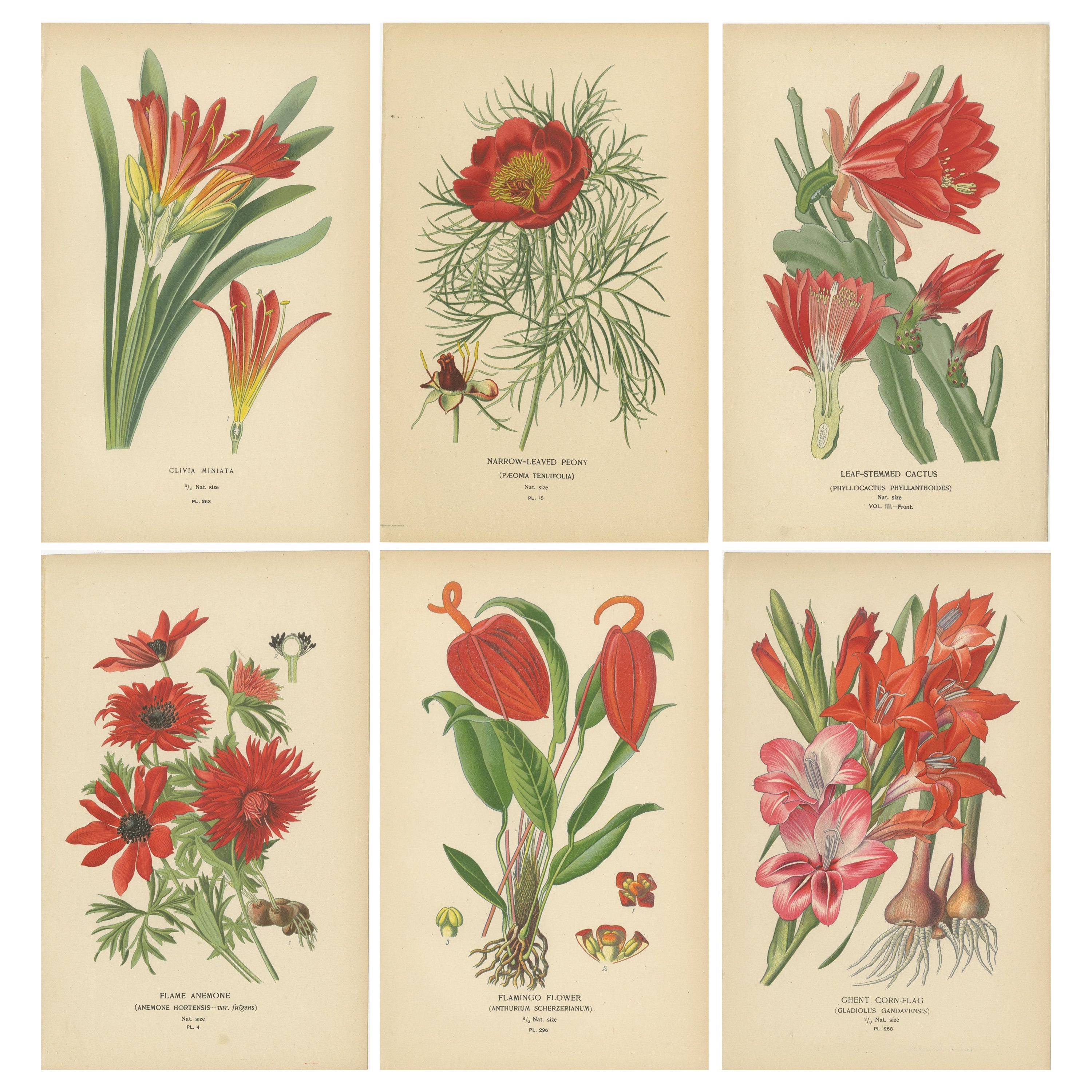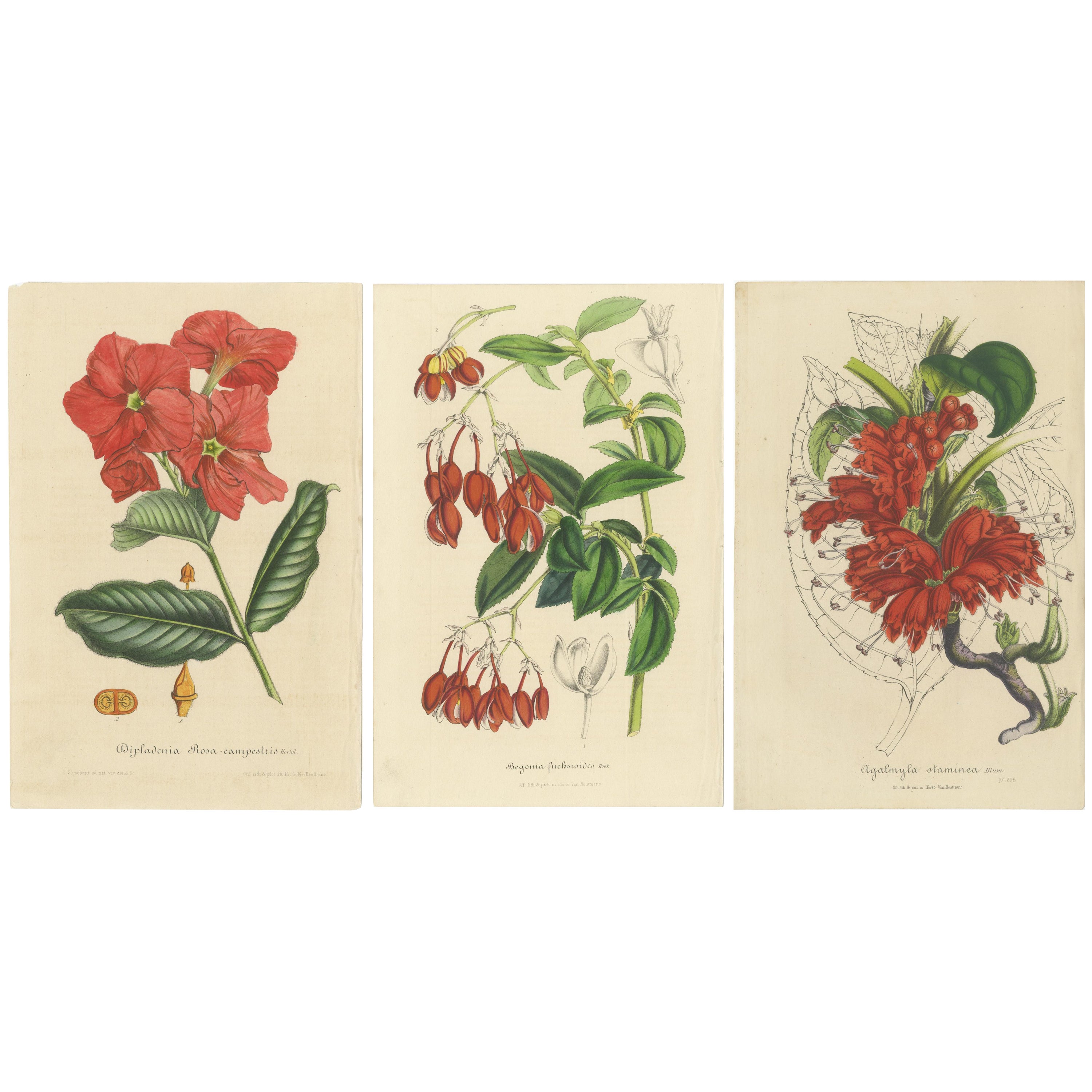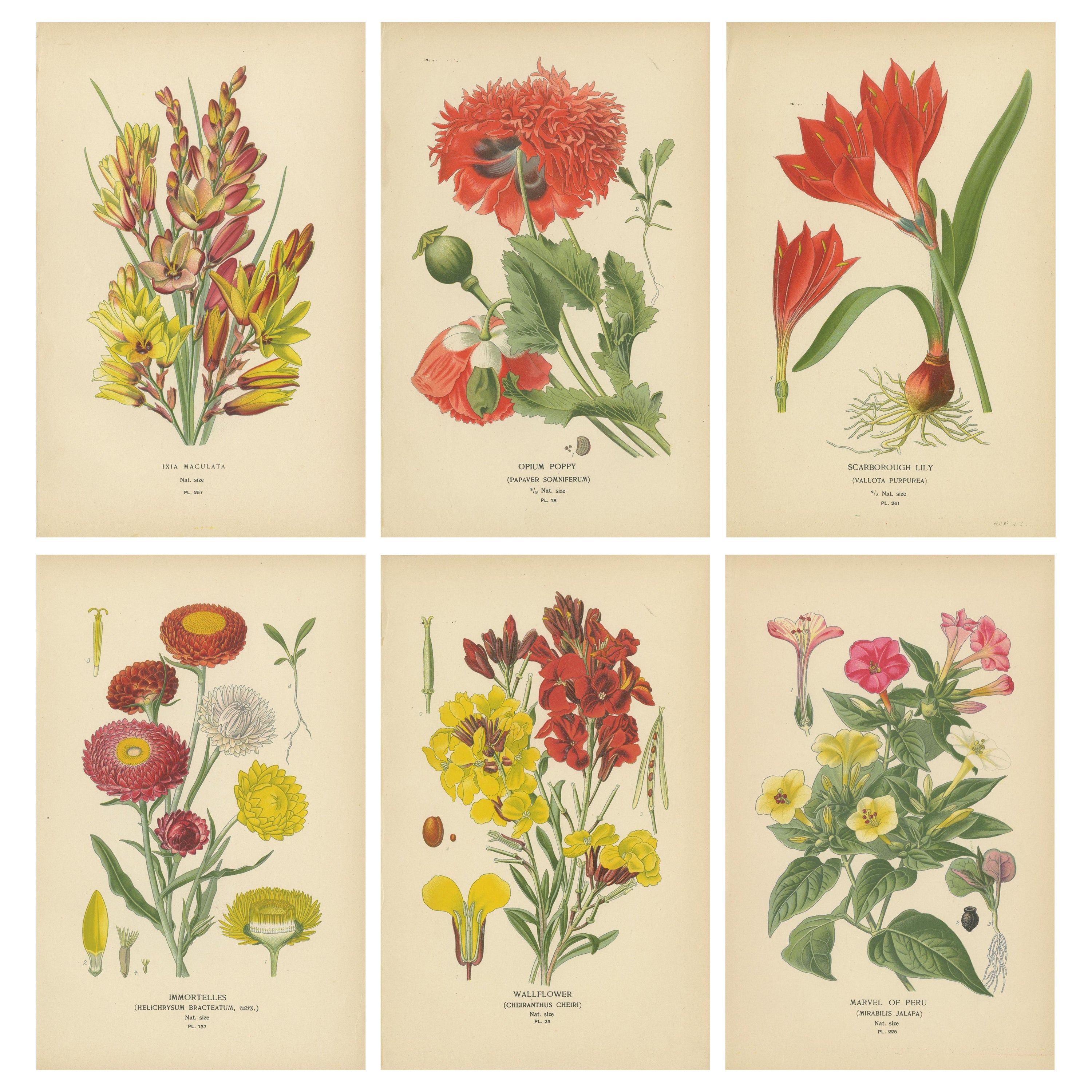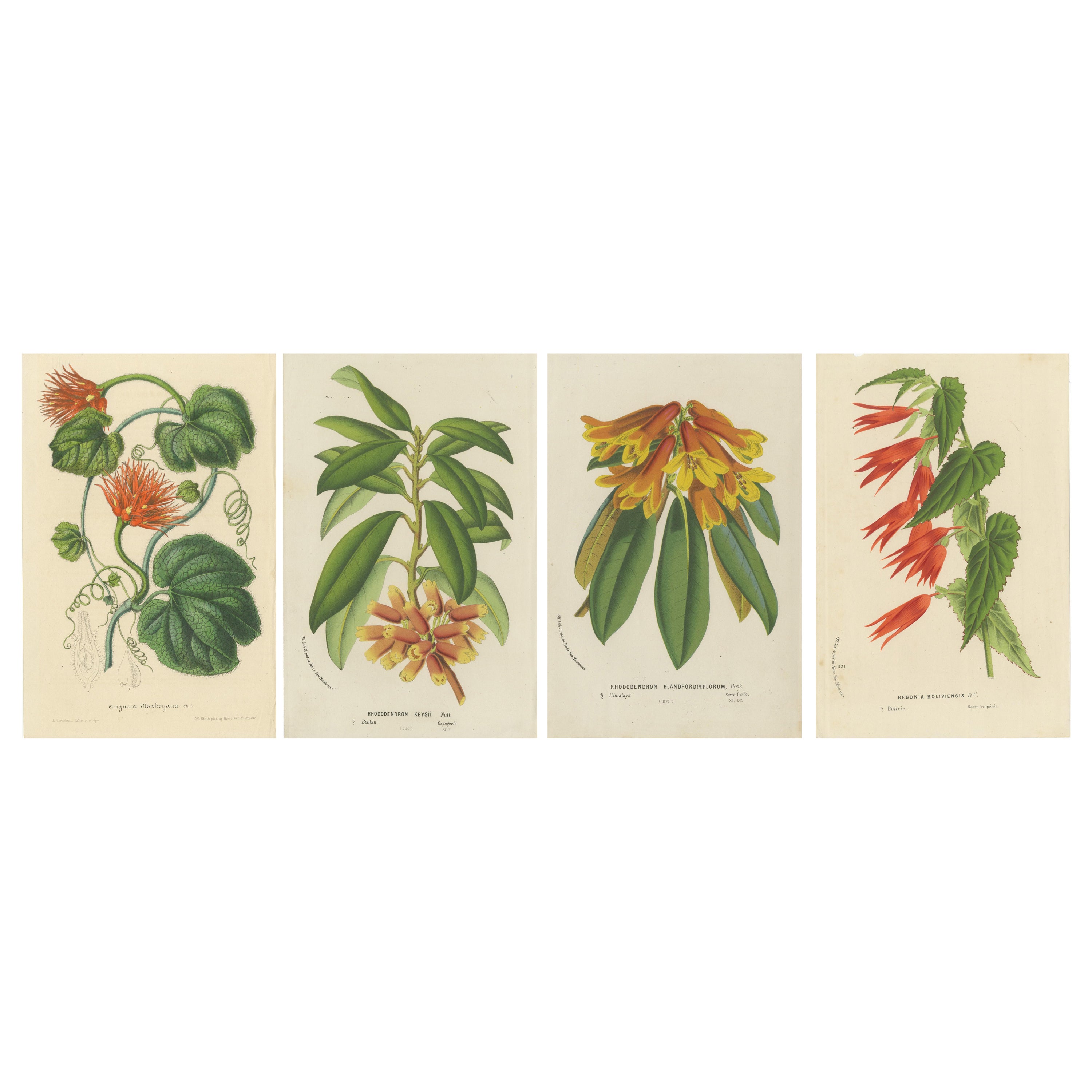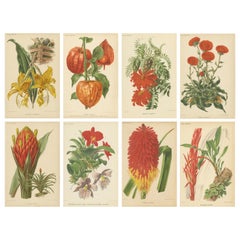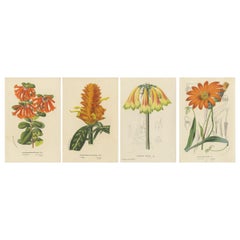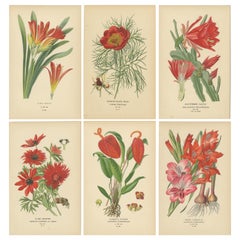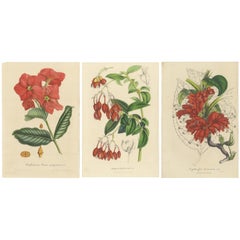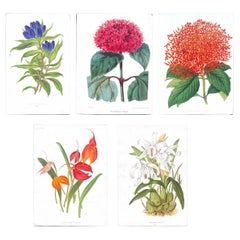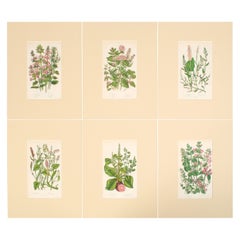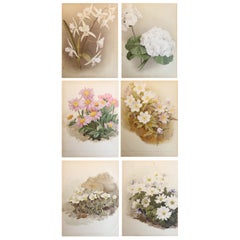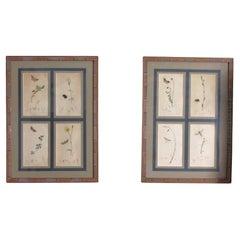Items Similar to Flora Illustrated: A Collection of 19th Century Botanical Art, Published c.1875
Want more images or videos?
Request additional images or videos from the seller
1 of 6
Flora Illustrated: A Collection of 19th Century Botanical Art, Published c.1875
$323.81per set
$404.76per set20% Off
£240.68per set
£300.85per set20% Off
€272per set
€340per set20% Off
CA$447.09per set
CA$558.87per set20% Off
A$495.79per set
A$619.74per set20% Off
CHF 260.50per set
CHF 325.63per set20% Off
MX$6,057.76per set
MX$7,572.20per set20% Off
NOK 3,259.25per set
NOK 4,074.06per set20% Off
SEK 3,059.36per set
SEK 3,824.20per set20% Off
DKK 2,071.14per set
DKK 2,588.93per set20% Off
About the Item
The prints depict various botanical species, each illustrated with detailed attention to the morphology of the plants, including leaves, flowers, and sometimes fruits or seeds. These illustrations are typical of botanical artwork used for scientific documentation and plant identification, commonly produced during the 18th and 19th centuries. Here is a brief description of each plant shown in the provided images:
1. Philodendron Erubescens: Known commonly as the Blushing Philodendron, this plant is characterized by its climbing habit and dark green, shiny leaves with a red underside. It is popular as an ornamental houseplant in many parts of the world.
2. Blandfordia Flammea: Commonly referred to as the Christmas Bells or Flame Bells due to its bell-shaped, vibrant red and yellow flowers. This plant is native to Australia and blooms around the Christmas season, making it particularly noteworthy.
3. Obeliscaria Pulcherrima: This plant, possibly a fictional or misidentified species (as the name doesn't correspond to known botanical records), is depicted with striking red and yellow flowers, resembling a coneflower or a rudbeckia.
4. Stifftia Chrysantha: Known as the Golden Fleece, this plant features large, spherical flowers composed of numerous long, slender, yellow-orange florets emanating from a central cone. It is native to Brazil and is often grown for its ornamental value.
About the maker:
Louis van Houtte was a prominent Belgian horticulturist and botanist renowned for his significant contributions to botanical illustration during the 19th century. Born in 1810, van Houtte is best known for his work as the proprietor of one of the largest and most successful horticultural establishments in Europe, located in Ghent, Belgium. His nursery specialized in exotic plants, and he employed numerous skilled gardeners and botanists.
Van Houtte's most famous legacy is perhaps the "Flore des Serres et des Jardins de l'Europe," a monumental work published between 1845 and 1883. This publication was an extensive series of horticultural and botanical books that illustrated thousands of plant species, many of which were new to science and European gardens at the time. The work combined scientific accuracy with artistic beauty, showcasing the talents of several gifted artists and lithographers.
The illustrations in "Flore des Serres" were primarily lithographs, a method that allowed for detailed and vibrant color reproductions, which were essential for the study and popularization of plant species. These prints not only served as a catalog of exotic plants available for purchase from his nursery but also as an educational tool and a source of inspiration for gardeners and botanists across Europe.
Van Houtte's contributions to botanical art and horticulture were driven by a passion for plants and an entrepreneurial spirit that recognized the growing public interest in botany. His work helped disseminate botanical knowledge and influenced European garden design in the Victorian era.
The creator of these prints, often a collaboration between botanists and skilled artists, aimed to capture the intricate details of each plant for purposes of study and record-keeping. The style of these prints suggests they could have been made by European illustrators and botanists, possibly as part of a larger botanical survey or for inclusion in a comprehensive botanical text. The high level of detail and the vivid coloring techniques are indicative of the lithographic processes that were popular in botanical illustration during the 19th century, used to ensure that both the scientific community and horticultural enthusiasts could share knowledge and appreciation of plant species from around the world.
- Dimensions:Height: 9.85 in (25 cm)Width: 6.42 in (16.3 cm)Depth: 0 in (0.02 mm)
- Sold As:Set of 4
- Materials and Techniques:
- Period:
- Date of Manufacture:Circa 1875
- Condition:Condition: Good, given age. General age-related toning and/or occasional minor defects from handling. Colors are vivid. Please study scan carefully.
- Seller Location:Langweer, NL
- Reference Number:Seller: BG-13761-37, BG-13761-64, BG-13761-65, BG-13761-681stDibs: LU3054341439522
About the Seller
5.0
Recognized Seller
These prestigious sellers are industry leaders and represent the highest echelon for item quality and design.
Platinum Seller
Premium sellers with a 4.7+ rating and 24-hour response times
Established in 2009
1stDibs seller since 2017
2,609 sales on 1stDibs
Typical response time: <1 hour
- ShippingRetrieving quote...Shipping from: Langweer, Netherlands
- Return Policy
Authenticity Guarantee
In the unlikely event there’s an issue with an item’s authenticity, contact us within 1 year for a full refund. DetailsMoney-Back Guarantee
If your item is not as described, is damaged in transit, or does not arrive, contact us within 7 days for a full refund. Details24-Hour Cancellation
You have a 24-hour grace period in which to reconsider your purchase, with no questions asked.Vetted Professional Sellers
Our world-class sellers must adhere to strict standards for service and quality, maintaining the integrity of our listings.Price-Match Guarantee
If you find that a seller listed the same item for a lower price elsewhere, we’ll match it.Trusted Global Delivery
Our best-in-class carrier network provides specialized shipping options worldwide, including custom delivery.More From This Seller
View AllOriginal Vintage Botanical Illustrations from Revue Horticole, circa 1855
Located in Langweer, NL
Here are descriptions of the eight botanical illustrations, including the Latin and English names of the plants, why they are significant, and details about the creators and the tech...
Category
Antique 1850s Prints
Materials
Paper
$638 Sale Price / set
20% Off
Vibrant Botanical Portraits: Exquisite Plant Illustrations from the 19th Century
Located in Langweer, NL
These illustrations, executed with precision and rich coloration, are fine examples of chromolithography, a technique popular in the 19th century for its ability to produce vivid, mu...
Category
Antique 1870s Prints
Materials
Paper
$361 Sale Price / set
20% Off
Botanical Illustrations from the Victorian Era: A Visual Celebration of Flora
Located in Langweer, NL
These are vibrant chromolithographs from "Favourite Flowers of Garden and Greenhouse" by Edward Step, illustrated by Désiré Bois and published in 1896 by Frederick Warne & Co., Londo...
Category
Antique 1870s English Prints
Materials
Paper
$466 Sale Price / set
20% Off
Exquisite Botanical Illustrations from Curtis’s Botanical Magazine (1847)
Located in Langweer, NL
These beautiful hand-colored botanical illustrations, drawn and lithographed by the renowned artist Walter Hood Fitch, were featured in Sir William Jackson Hooker's *"Curtis's Botanical Magazine,"* published in London in 1847. Fitch was one of the most prolific and skilled botanical illustrators of the 19th century, known for his ability to capture the intricate details and vibrant hues of the plants he depicted.
Sir William Jackson Hooker, a famous British botanist and the director of the Royal Botanic Gardens, Kew, commissioned these illustrations as part of his work to document newly discovered plants from around the world. The *Curtis’s Botanical Magazine* has been published since 1787 and remains one of the longest-running botanical periodicals.
Detailed Descriptions of Each Plant
#### 1. **Dipladenia Rosa-campestris** (*Hortul. ex Veitch*)
- **English Name**: Rose Dipladenia
- **Description**: This illustration showcases *Dipladenia rosa-campestris*, a striking flowering plant known for its showy pink to deep red trumpet-shaped flowers. Native to tropical regions of South America, particularly Brazil, *Dipladenia* belongs to the family Apocynaceae and is prized in horticulture for its vibrant blooms and ability to climb. Fitch's illustration emphasizes the waxy leaves and the vivid color of the petals, bringing the plant to life on the page.
#### 2. **Begonia fuchsioides** (*Hook.*)
- **English Name**: Fuchsia-flowered Begonia
- **Description**: The *Begonia fuchsioides* is depicted with its characteristic red, pendulous flowers, which closely resemble the blooms of fuchsia plants. This species of Begonia is native to tropical regions and is popular for its delicate, bell-shaped flowers and glossy leaves. Fitch’s attention to the arrangement of the leaves and the contrast between the flowers' vibrant red and the soft green leaves provides a lifelike representation of this exotic plant.
#### 3. **Agalmyla staminea** (*Blume*)
- **English Name**: Staminate Agalmyla
- **Description**: This illustration captures the unique red tubular flowers of *Agalmyla staminea*, a plant native to Southeast Asia. The species is part of the Gesneriaceae family and is known for its bright, showy flowers that grow in dense clusters. Fitch’s careful rendering of the plant’s leaves and the intricate veining, along with the vibrant red flowers, highlights his talent for bringing the botanical subject to life with both scientific accuracy and artistic flair.
### About the Makers
#### **Walter Hood Fitch** (Artist and Lithographer)
Walter Hood Fitch (1817–1892) was one of the most influential botanical artists of the 19th century, working primarily with Sir William Hooker and later his son, Joseph Dalton Hooker, at Kew Gardens. He produced thousands of illustrations for various botanical publications, including *Curtis’s Botanical Magazine*, where he was responsible for the majority of its plates from 1834 to 1877. Fitch’s mastery of lithography allowed him to create richly detailed and accurate depictions of plants, with a particular talent for illustrating both the botanical structure and the vibrant colors of flowers.
#### **Sir William Jackson Hooker** (Director and Editor)
Sir William Jackson Hooker (1785–1865) was a prominent British botanist and the director of the Royal Botanic Gardens, Kew. Under his leadership, Kew Gardens expanded its collection of plants from around the world, and Hooker was instrumental in promoting the scientific study and illustration of these species. As the editor of *Curtis’s Botanical Magazine*, Hooker collaborated with Fitch to document and share the beauty and diversity of plants with the scientific community and the public.
### The Lithographic Technique
Lithography, particularly chromolithography, was a crucial innovation in botanical illustration. Fitch was skilled in the traditional method of lithography, where an image was drawn onto a stone plate with a greasy substance and then inked for printing. Hand-coloring was often applied afterward to bring the prints to life, as seen in these illustrations. This method allowed for highly detailed, accurate representations of plants and their botanical features, making it invaluable for both scientific study and aesthetic appreciation.
### Conclusion
These prints from *Curtis’s Botanical Magazine* reflect the height of botanical art in the mid-19th century. The combination of Walter Fitch...
Category
Antique 1840s Prints
Materials
Paper
$409 Sale Price / set
20% Off
Floral Treasures: 19th-Century Chromolithographs from the Botanical Collection
Located in Langweer, NL
The following six chromolithographs are part of a collection published in 1896, created by Désiré Bois and Edward Step. They illustrate botanical subjects with remarkable attention t...
Category
Antique 1890s Prints
Materials
Paper
$514 Sale Price / set
20% Off
Lush and Vibrant: A Collection of Exotic Botanical Illustrations, circa 1875
Located in Langweer, NL
The prints depict a selection of exotic plants with a remarkable detail and vibrant color, showcasing the beauty and diversity of botanical life. Each illustration is a testament to ...
Category
Antique 1870s Prints
Materials
Paper
$390 Sale Price / set
20% Off
You May Also Like
Bignonia venusta – Antique Botanical Chromolithograph, 1880s
Located in Fukuoka, JP
A striking original botanical print from the 1880s, featuring Bignonia venusta, also known as flame vine or orange trumpet vine. This brilliantly colored illustration captures the dr...
Category
Antique 19th Century French Prints
Materials
Paper
Set of Six English 19th Century Botanical Engravings, England, C.1880
Located in London, GB
A set of six English 19th century Botanical Engravings, England C.1880.
Mounted, ready to be framed.
Fine examples, in excellent condition commensurate of age.
Category
Antique Late 19th Century English Victorian Prints
Materials
Paper
Set of 6 Original Antique Botanical Prints, circa 1870
Located in St Annes, Lancashire
Lovely set of 6 botanical prints
Chromo-lithographs
Original color
Published, circa 1870
Unframed.
The measurement given is for one print.
Free shipping
Category
Antique 1870s English Victorian Prints
Materials
Paper
19th Century Botanical Engravings of flowers and insects
Located in Seaford, GB
Pair of 19th-century British plant botanicals Engravings with Insects – John Curtis (1791-1862)
Sold as a pair - Please let us know your choice on your purchase order:
1 - Dandeli...
Category
Antique 19th Century English Victorian Prints
Materials
Paper
Botanical Engravings by John Curtis 19th century
Located in Seaford, GB
19th Century Botanical Engravings: A Timeless Art Form
The Legacy of John Curtis and 19th-Century Botanical Engravings
🖋 Provenance Story – 19th Century Botanical Engravings with ...
Category
Antique 19th Century British Victorian Prints
Materials
Paper
$2,264 / set
Original 1880s Botanical Print of Hæmanthus Kalbreyeri — Vibrant Antique Chromol
Located in Fukuoka, JP
A striking original chromolithograph from the 1880s, this botanical print features the dramatic Hæmanthus kalbreyeri, also known as the blood lily. Characterized by its intense red s...
Category
Antique 19th Century French Prints
Materials
Paper
More Ways To Browse
Cobalt Blue Porcelain And Bronze Urn
Crab Claw
Crockery Cabinet
Crystal Cat Vintage
Danish 3 Chest Of Drawers
Decorative Crafts Inc Brass
Delft Large Jars
Discus Thrower
Double Pendulum
Dovetail Vinyl Record
Dragon Boat
Drexel Chinoiserie
Drexel Precedent
E Drouot
Edward Wormley Precedent
Egyptian Cat
Embossed Copper Box
English Bow Front Chest
